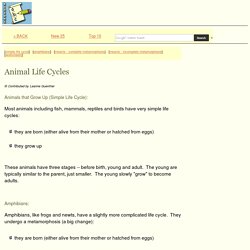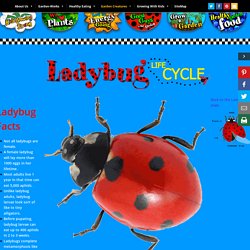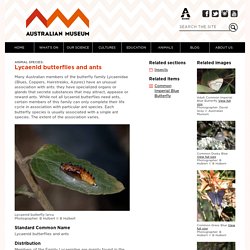

Living Things Change: Crash Course Kids #41.1. Sheppard Software's Life Cycle Movie: learn all about life cycles in this animated Flash movie! KS2 Science. Finding out how you move and grow.

Can you label the human skeleton? When you've finished move onto the animal skeletons. Do you know which groups living things belong to? Look at the plants and animals as they go past. Can you drag them into the correct groups? Magnets have north poles and south poles. What does a year look like in space? © v2vtraining.co.uk The application consists of two sorting activities and one writing frame to support work towards the end of the unit. Solid, liquid and gas are called the three states of matter.
Materials have different properties that make them useful for different jobs. Pupils can research information about teeth types, tooth structure and tooth decay. Use an information panel where pupils can research details about food groups and a balanced plate approach to a healthy diet.Balanced Plate lesson outline An information panel to explains the terms used in, and concepts behind, food chains. Remarkable animal and plant life cycles - Digital book. BBC Bitesize - The lifecycle of animals. Animal Life Cycles. © Contributed by Leanne Guenther Animals that Grow Up (Simple Life Cycle): Most animals including fish, mammals, reptiles and birds have very simple life cycles: they are born (either alive from their mother or hatched from eggs) they grow up These animals have three stages -- before birth, young and adult.

The young are typically similar to the parent, just smaller. Amphibians: Amphibians, like frogs and newts, have a slightly more complicated life cycle. They are born (either alive from their mother or hatched from eggs) they spend their childhood under water, breathing with gills they grow into adults and move to the land, breathing with lungs Animals that Undergo a Complete Metamorphosis: Insects. The stages in the life of a butterfly: ABC online education. From caterpillar to butterfly: ABC online education. What is the life cycle of a mammal? The mammalian life cycle begins when a male's sperm cell fertilizes a female's egg cell by mating.

The length of the incubation period in the womb varies based on the species. The fetus develops and grows inside the womb for the entirety of the incubation period. Most mammals give birth to live young, as opposed to laying eggs. Like the incubation period, the length of each stage of the life cycle varies based on the species. Newborn mammals continue to grow and develop once they are out of the womb. The adolescent stage of the mammalian life cycle involves the development of reproductive organs. Following the adolescent stage is adulthood. Adulthood is followed by old age and the eventual death of the mammal as it declines in health and physical strength. Learn more about Mammals. 6 Life Cycles of Mammals. A baby seal begins its life: ABC online education. Platypus life cycle: ABC online education. The first stage in the Life Cycle of the Frog. How a bird egg forms: ABC online education.
Egg layers great and small: ABC online education. Seahorse Life Cycles. Cicadas Aren’t the Only Crazy Ones: Nature’s Most Bizarre Life Cycles. Ladybug Life Cycle – Kids Growing Strong. Ladybugs are a type of beetle; insects with six jointed legs.

Ladybugs have special organs in their feet to help them smell. They use their antennae to touch, smell and taste. Females lay their tiny eggs in yellow clusters under a leaf or stem, often near a colony of aphids (tiny garden pests that damage many plants.) Within a week, the eggs hatch into alligator-shaped larvae that start gobbling up aphids, tiny worms and a variety of insect eggs. Both larvae and the adults are beneficial predators in the garden. Lycaenid butterflies and ants. Many Australian members of the butterfly family Lycaenidae (Blues, Coppers, Hairstreaks, Azures) have an unusual association with ants: they have specialized organs or glands that secrete substances that may attract, appease or reward ants.

While not all lycaenid butterflies need ants, certain members of this family can only complete their life cycle in association with particular ant species. Each butterfly species is usually associated with a single ant species. The extent of the association varies. Lycaenid butterfly larva Photographer: B Hulbert © B Hulbert Standard Common Name Lycaenid butterflies and ants Distribution Members of the Family Lycaenidae are mainly found in the tropics. Other behaviours and adaptations Ants are normally predators of butterfly larvae (caterpillars), however lycaenids have evolved a range of mechanisms to overcome predation.
Life Cycle. How seeds become plants: ABC online education. 00:00:02:07FROG:(Croaks) (Croaks) (Croaking)00:00:17:15NICK HARDCASTLE:Hmm.

Mm-hmm. Huh? It's a pea. (Screams) Can you believe that, in my hand, I'm holding what could be a huge forest of trees? This tiny little seed could potentially grow into the world's tallest flowering tree, the massive Eucalyptus regnans, or mountain ash. KS2 Bitesize Science - Plant life cycles : Read. 10 Ready-to-Go Resources for Teaching Life Cycles. Lifecycles - Free Educational Science Games.